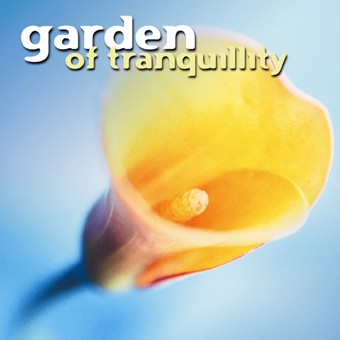Taking Music to the Mountains is a festival of 24 concerts in magnificent natural settings which takes place between July 7 – August 31, 2017.
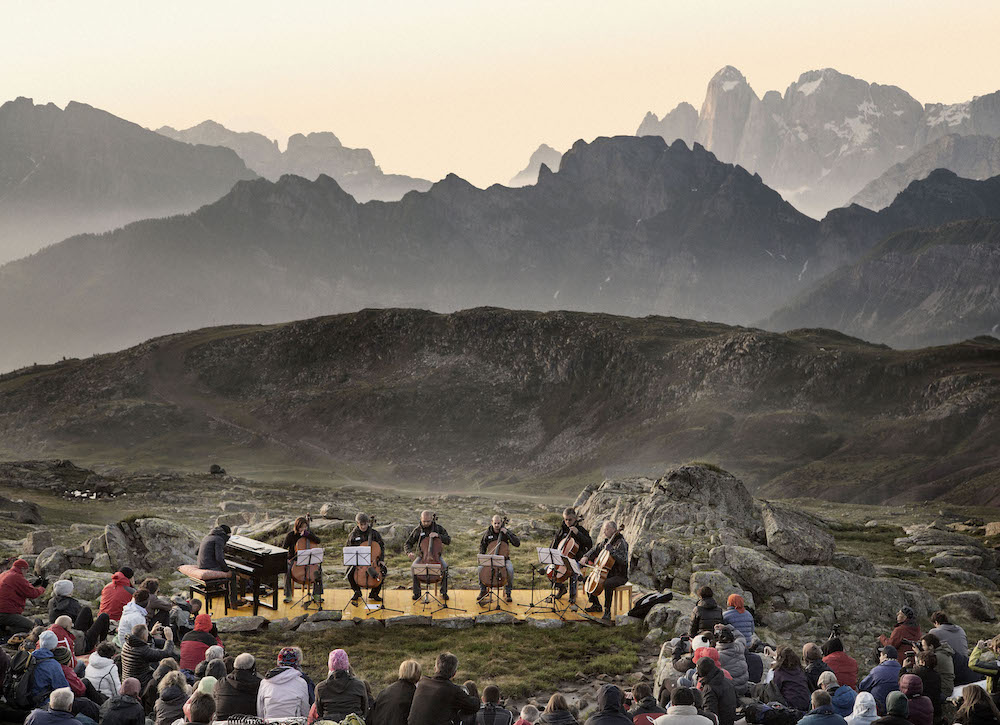
Each summer, the Sounds of the Dolomites music festival is held in the beautiful Trentino Dolomites, and features a musical programme that is both eclectic and wide-ranging. This year, the 12 Cellists of the Berliner Philharmoniker, singer-songwriter Jack Savoretti, and jazz legend Chick Corea are all on the menu.
Now in its 23rd edition, the Sounds of the Dolomites festival offers both musicians and audiences an intriguing proposition. How would their music sound if it were played outdoors, in one of the world’s most famous mountain landscapes?
Each summer, in July and August, they come to the Trentino Dolomites to find out: and discover a unique and unforgettable event.
Almost every concert begins with a walk
The key to the festival’s success is its willingness to seek out the most stunning venues. The concerts are not staged down in the valleys, with the cliffs and crags a distant backdrop: they’re up on the slopes – performed in lush Alpine meadows, or on the shores of remote mountain lakes. Usually, there’s a mountain refuge nearby, and a switchback road or cable car to take the sting out of the climb. But in most cases, audiences and musicians need to do a little walking to get there.

It’s well worth the effort. Each setting has its own special qualities: but every one of them is magical. Up in the mountains, the music breathes like nowhere else – and begins an fascinating dialogue with its surroundings. Violins and cellos flicker in the breeze, and the silences are as meaningful as the songs. It’s no wonder, then, that the festival has become a widely-anticipated event amongst both musicians and music lovers – and is reviewed in both the Italian and international media.
From classical recitals to singer-songwriters
This year’s festival begins with a performance by the 12 Cellists of the Berliner Philharmoniker at the Rifugio Fuciade – a serene and lovely spot near the San Pellegrino pass. The ensemble was established in 1972 and over the years it’s played for the Emperor of Japan and the President of the United States. On July 7, it will perform works by Boris Blacher, Julius Klengel, Astor Piazzol and José Carlia, while the audience gazes across the trees and meadows towards the Pale di San Martino: one of the most dramatic of all the Dolomite massifs.
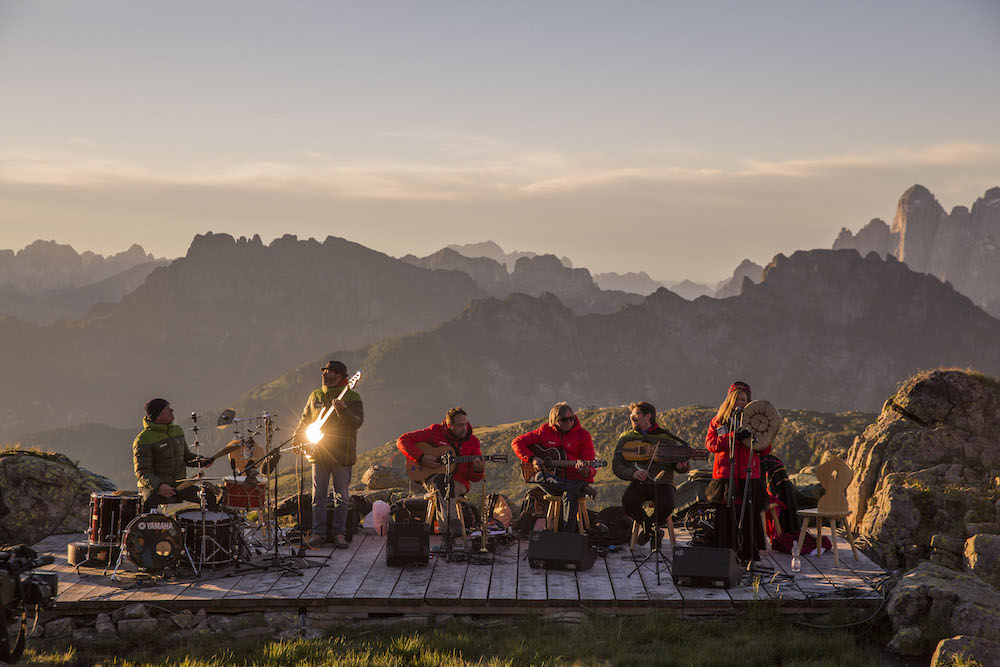
It will be a fitting start to a mouthwatering programme, which mixes world music, jazz, and classical recitals with performances by singer-songwriters such as Jack Savoretti. Savoretti’s “Written in Scars” was a permanent fixture in the UK album charts in 2015, and he’ll be playing songs from his latest release, “Sleep No More” in Madonna di Campiglio on August 28. Meanwhile, on July 12 at the Villa Welsperg, you can see Jazz legend Chick Corea, who’ll be duetting with banjo virtuoso Béla Fleck: an unlikely combination perhaps, but one which has already produced intriguing results, and received rave reviews.

Another highlight comes courtesy of the Tunisian oud virtuoso, Anouar Brahem, who’ll be playing on August 2, in the dramatic setting of the Passo Sella. But for raw mountain atmosphere, it will be hard to beat the recital on July 26 by the Kelemen Quartet at Laghi di Bombasèl – a series of remote and magnificent mountain lakes, high above the town of Cavalese.
A festival within a festival
One striking feature of this year’s event is the “festival within a festival”, which runs from July 17-23 in the Brenta Dolomites. Here, you’ll be able to see a concert a day in spectacular locations around the resort town of Madonna di Campiglio.
They’ll be performed by one of the musical directors of the Sounds of the Dolomites, cellist Mario Brunello, with members of Kremerata Baltica orchestra – and the programme promises to be innovative in every way. From 18-20 July, for example, Brunello will be trekking through the mountains with fellow cellist Peteris Sokolovksis, stopping en route to perform music by Offenbach and Boccherini – as well as the “Lux Aeterna”, Kneifel’s mystical work, in which they’ll accompany their cellos with song.
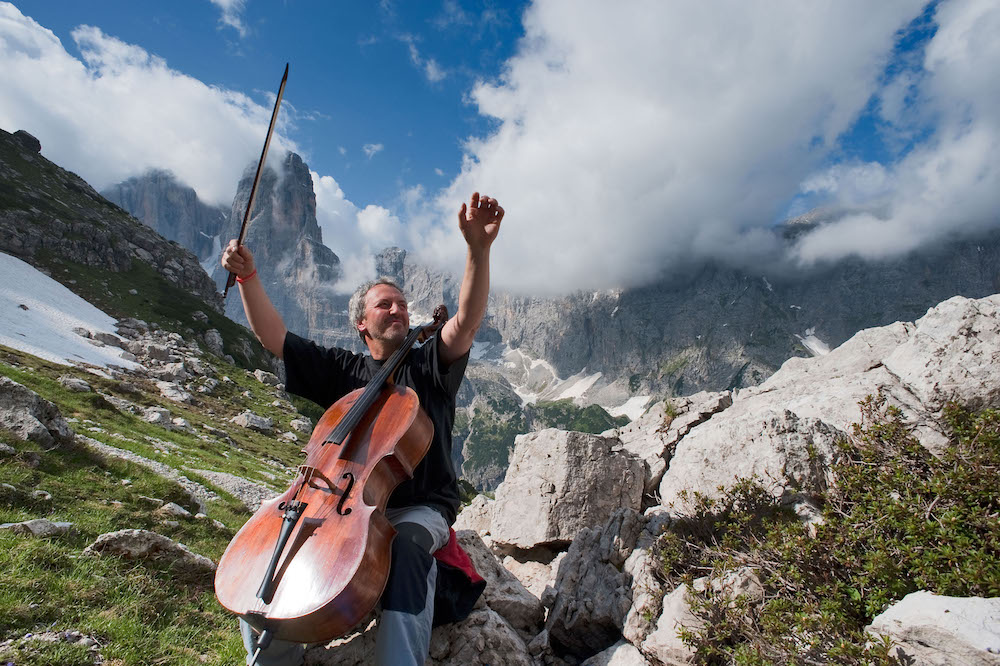
Bruno and his cello!
Throughout this event Brunello will be playing a prestigious 17th-century Maggini cello, made with wood from the forests just east of Paneveggio in Trentino. Here, the mountain valleys are home to Italian Red Spruces, which grow straight and slow in the chilly, sheltered microclimate. Their dense, consistent timber makes near-perfect soundboards for musical instruments – and Maggini wasn’t the only master craftsman to understand its properties. Stradivarius also used wood from these forests for his violins.
Nearly all the concerts are free
If you’d like to join Mario Brunello and Peteris Sokolovksis for their three-day trek through the Brenta Dolomites, the price is €360, which includes two nights accommodation in mountain refuges (limited spaces – bookings from 9 am on May 8 on +39 0465 447501). But otherwise, all the concerts in the Sounds of the Dolomites festival are free. New this year: with your Trentino Guest Card or if you have a local guest card, you can also join in one of the mountain guides leading walks to the venues for free.
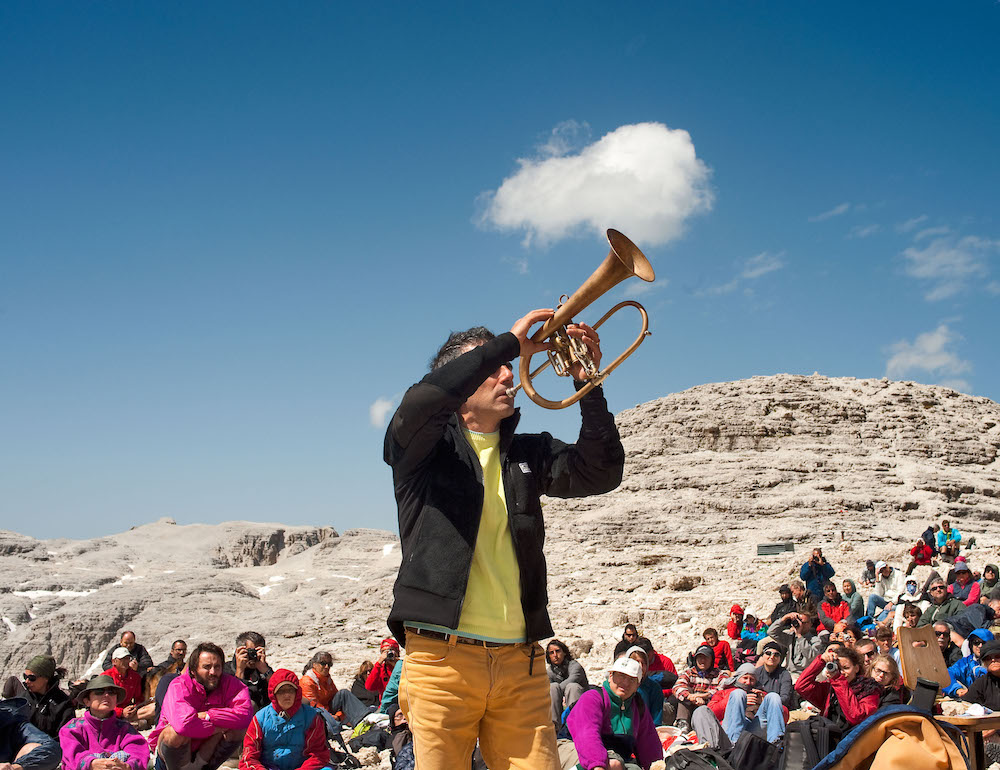
Most concerts begin at 1pm. However, on two mornings – July 15 and 23 – they begin with the sunrise, at 6am. Each has a back-up venue at lower altitude, in case of inclement weather.
The Festival will of course provide the perfect excuse for a longer holiday in the Dolomites, which were recognized as a World Heritage Site by Unesco in 2009. The best places to stay will be in the towns and villages of the Val di Fassa and the Val di Fiemme, in San Martino di Castrozza, or – for Mario Brunello’s mini-festival of July 17-23 – Madonna di Campiglio. For details of accommodation, visit www.visittrentino.info/en/booking/all-accommodation.
For more information about the Sounds of the Dolomites, visit www.isuonidelledolomiti.it/EN/.

